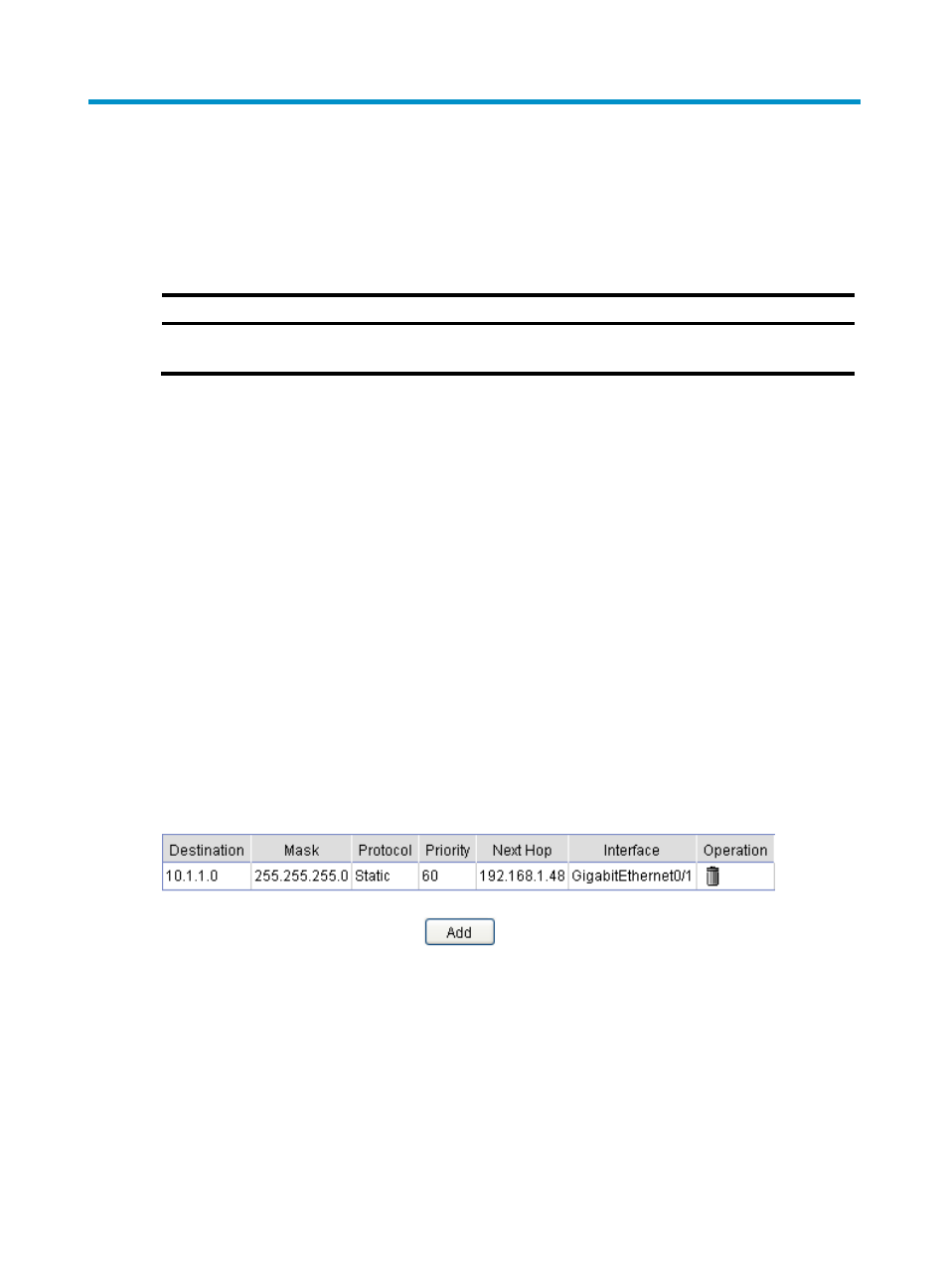Configuring static routing, Feature and hardware compatibility, Overview – H3C Technologies H3C SecPath F1000-E User Manual
Page 358: Configuring a static route in the web interface, Configuration procedure

333
Configuring static routing
Feature and hardware compatibility
Feature F1000-A-EI/E-SI/S-AI
F1000-E
F5000-A5 Firewall
module
BFD for static
routes
No No
Yes
No
Overview
Static routes are manually configured. If a network's topology is simple, you only need to configure static
routes for the network to work properly. The proper configuration and usage of static routes can improve
network performance and ensure bandwidth for important network applications.
The disadvantage of using static routes is that they cannot adapt to network topology changes. If a fault
or a topological change occurs in the network, the routes will be unreachable and the network breaks.
The network administrator has to modify the static routes manually.
Configuring a static route in the web interface
Configuration procedure
1.
Select Network > Routing Management > Static Routing from the navigation tree.
The static route configuration page appears.
Figure 233 Static route configuration page
2.
Click Add.
The page for configuring a static route appears.